Meet the Dairy Cows of Richlands Creamery
Do you know where your milk comes from?
Meet local dairy cows up close and personal at
Richlands Dairy & Creamery’s
FAMILY FARM DAYS!
June 11-13 & June 18-20
Hours on 6/11 & 6/18 (Friday): 1-5pm
Hours on 6/13-14 & 6/19-20 (Sat & Sun): 10am-5pm with live music 1-4pm
116 Cox Rd, Blackstone VA
Tour the dairy, handmilk a cow, pet baby calves, climb aboard a hayride, browse the educational booths and craft vendors, and relax over lunch and farm-fresh ice cream! More details below…
*
And starting this weekend, look for Richlands Dairy & Creamery’s local half-and-half and heavy cream in the dairy section of your Seasonal Roots online farmers market. Plus, the PB&J Bundle will feature their chocolate milk!
*
Okay, so we all know milk comes from dairy cows, right? But when we’re chugging down a tall, sweet, creamy, ice cold glass of milk, how many of us actually know anything about the lives of the cows who made it for us?
If you bought that milk at a big grocery store, it’s nearly impossible to really know, even if there’s a nice story about a farmer on the carton. Today’s impersonal industrial food supply chains combine milk from many dairies and ship it long distances.
But at Seasonal Roots, our mission is to connect you with the local folks who provide the food you eat. Since June is National Dairy Month, it’s the perfect time to get to know the humans and dairy cows at Richlands Dairy & Creamery. They’re less than an hour southwest of Richmond and we’re super excited they’re joining our online farmers market — starting this weekend!
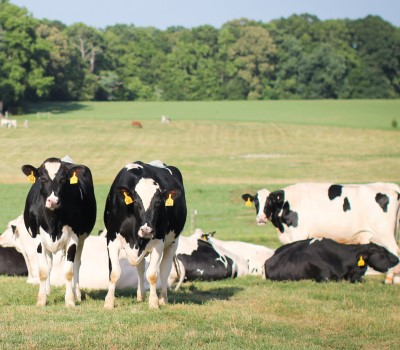
We talked with Coley Drinkwater, who runs the farm along with her father, her brother, TR Jones, and his wife, Brittany.
VEGGIE FAIRY:
Seems like everybody’s jumping on the sustainability bandwagon these days because it’s so important for the future. Sometimes it’s just lipservice, though. Where does sustainability fit into your family’s approach to farming?
COLEY:
Our farm’s been in our family since colonial times. We wouldn’t still be here if we hadn’t been practicing sustainability all along. Our goal as farmers is to care for the land and the animals so it will be there for the next generation. Right now our farm is home to four generations: my 93-year-old grandmother, my parents, my brother TR and me, and our families.
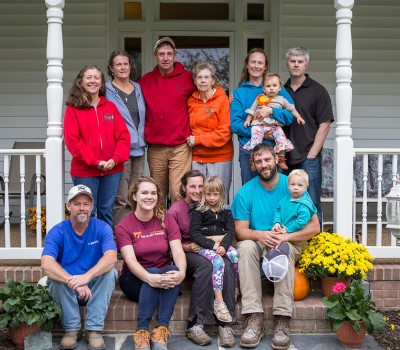
VEGGIE FAIRY:
Has it been a dairy farm all along?
COLEY:
Well, there were always a few cows to provide milk for the family. Tobacco was the cash crop. But in the 1950s, my grandfather already saw the writing on the wall and figured tobacco was on the way out. So he switched to dairy. After my dad graduated from Virginia Tech with a degree in dairy science, he brought his education back to the farm and really built it up.
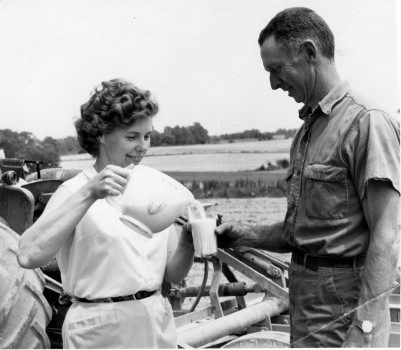
VEGGIE FAIRY:
From everything we hear about dairy farming, it’s not for wimps! The cows gotta be milked twice a day, every day, rain or shine, in blinding snow or blazing heat, right? And the market is very volatile.
COLEY:
It’s not for people who like to sleep in! Traditionally, most dairies sell to a milk co-op, including mid-size dairies like us. We’d produce the milk and the co-op would take care of picking it up, pastuerizing it, bottling it, plus marketing and distribution. It takes a lot off the farmer’s plate, but you’ve got no negotiating power. You can’t plan or budget, and it’s hard to afford to make upgrades to improve your practices because the price has nothing to do with what it actually costs to make the milk.
VEGGIE FAIRY:
Didn’t milk price hit an all-time low back in 2016?
COLEY:
It did, and it stayed low for a while. Plus, when COVID hit, milk price dropped again. With prices lingering at those lows for such an extended period of time, it changed the milk industry. Some dairies went under and a lot of mid-size dairies sold out to the really big dairy operations. The historical dairy industry is pretty much gone now.
VEGGIE FAIRY:
If they’re disappearing, that explains why it’s so hard to include truly local dairies in farmers markets. How’d you get through it?
COLEY:
We cut everything we could cut without sacrificing our cows’ health. And we were still losing money every month. We didn’t want to be the generation that lost the farm so we knew we were going to have to do something different.
VEGGIE FAIRY:
What were your options?
COLEY:
We could sell, but then the whole family would’ve had to move. We could expand, because there are efficiences of scale that kick in when you have more than a thousand dairy cows. Or we could change our business model.
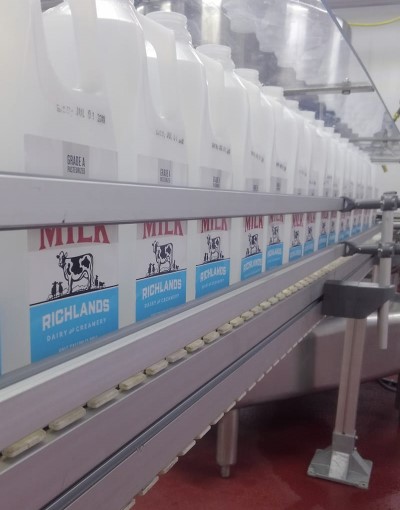
I had been thinking for awhile, ever since the local food movement started taking off, that it would be cool to have our own creamery. That way we could pastuerize and bottle our own milk and then sell it direct to customers. We didn’t have enough land to get expand and get bigger, so we said, “Okay! Let’s build a creamery!”
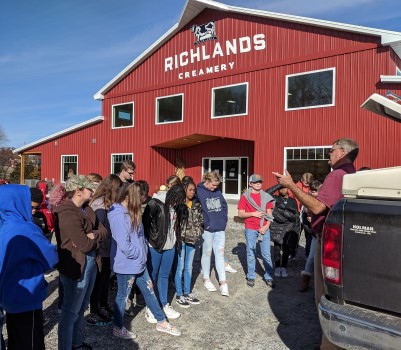
VEGGIE FAIRY:
And now you’re a destination! Not only do you have a storefront at the farm selling fresh milk and ice cream, you give tours so people can see exactly how the milk is made.
COLEY:
The tour takes about an hour but it’s more than that. We want our farm to be a place where families can come and create happy memories and feel good about where their milk and ice cream comes from. There’s no wifi, so people can put their phones down and relax and enjoy some ice cream. It’s really rewarding to see families visiting with each other and hear children laughing on our playground.
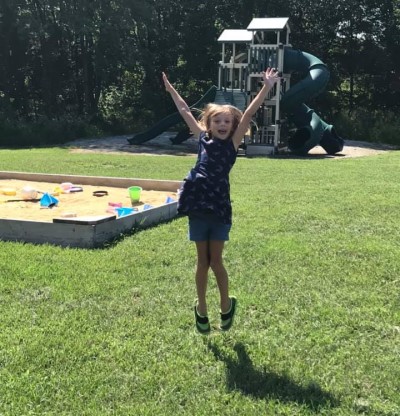
VEGGIE FAIRY:
What are the tours like?
COLEY:
You see the whole process. One of the most common comments we hear after a tour is, “I had no idea the cows were so well taken care of!” One woman even told us that after seeing how well dairy cows are treated, she was switching from soy milk back to dairy milk! Our girls have an on-call, 24-hour vet and their own nutritionist to make sure they’re getting a balanced grass-based diet. They only work two hours a day while they’re being milked, and they get a two month vacation from milking every year.
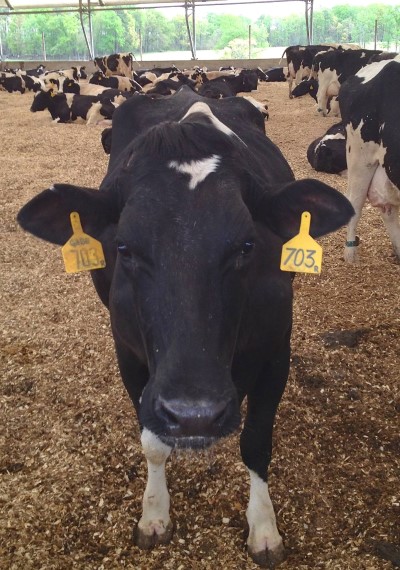
VEGGIE FAIRY:
Do the cows live out in the fields?
COLEY:
A dairy cow gets hot at around 75 degrees and doesn’t get cold until below freezing. So in the summer time here in the South, she wants to spend most of her time in the barn underneath the sprinklers and fans to keep cool. But in the winter time, a nice little nap outside in the sun when it’s 30 degrees is perfect.
*
You can see it all for yourself! To learn more about tours, events, and how the dairy is run, visit https://www.richlandsdairyfarm.com
ABOUT SEASONAL ROOTS
Since 2011, Seasonal Roots’ online farmers market has connected Virginia families with local family farmers who use sustainable, humane practices. Our neighborhood market managers – who believe in living better through scrumptious, healthy eating, being kind to animals, protecting the environment, and spreading joy – home-deliver freshly harvested produce, pastured eggs, grassfed dairy and meat, plus artisan fare. We empower our members to eat better and live better with more nutritious, flavorful food that’s good for us and good for the planet. More info at seasonalroots.com.
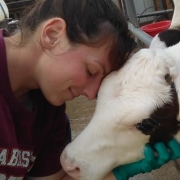 Richlands Dairy
Richlands Dairy
 2021 Seasonal Roots
2021 Seasonal Roots